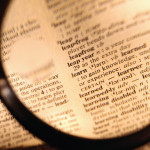Many writers struggle with the ratio of scene to narrative in both novels and creative nonfiction. The writer must understand the readers’ limit or threshold for narrative. How can a writer master this skill?
Writing Tip for Today: The amount of narrative (telling) versus the amount of scene (showing or acting out) or Narrative Pacing, is a more advanced writing skill, but a very important one. Without a good balance, the reader may tune out or stop reading.
- What’s Your Genre? In my experience, the more literary the story, the more narrative may be relied on. Think of literary as being on the extreme narrative end of the narrative/scene spectrum, and genre fiction (romance, mystery, etc.) relying much more on direct scenes at the other end of the spectrum. Mainstream fiction/creative nonfiction might land in the middle. I just finished a novel where there was twice as much narrative as scene, which is hard to pull off successfully. Perhaps super-literary readers will put up with more narrative if the writing is very skillful.
- How Important a Plot Point? A good rule of thumb is to write in scene when it’s an important plot point. In places that are simply connectors or transitions, narrative speeds up these less important (and potentially boring!) parts. EX: If you need to get a character from a bed to work (and we hope you don’t, very often), gloss over in narrative the small things that don’t matter. Reserve for scene the important bits. Following this rule will help you call attention to the correct things and give the illusion of boredom but not actual boredom to the mundane tasks we all must do daily.
- Good Old Rule of 3. That good old Rule of Three can be helpful when you fall into too much narrative without breaking away for at least a partial scene. Every 3 sentences or paragraphs, ask yourself if the reader can still get the sensory information of a scene. If not, break out of the narrative for at least a short scene. Remember, it’s up to you to understand how long you can be out of scene in narrative without losing your reader. The Rule of Three is not a formula, just a guide.




